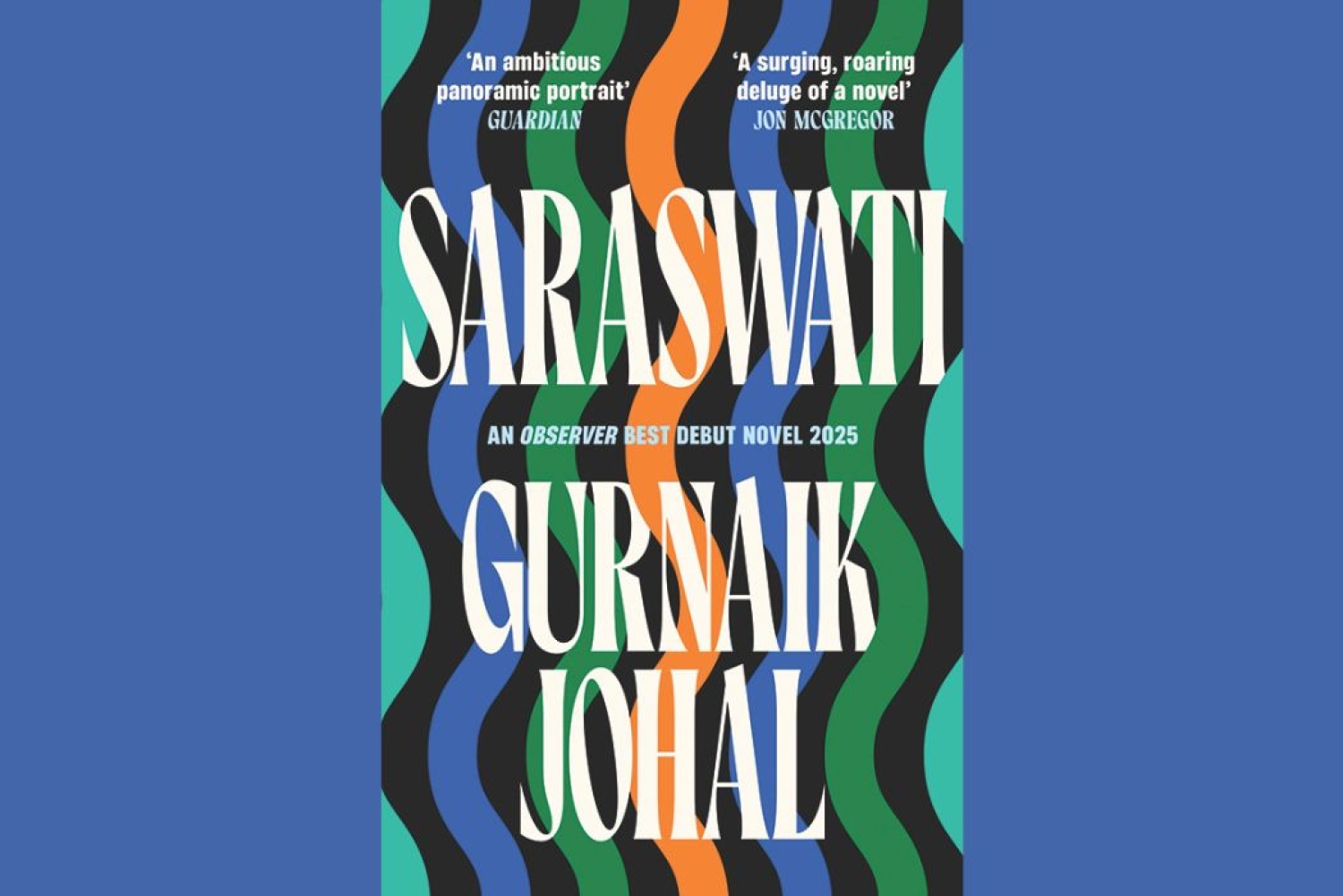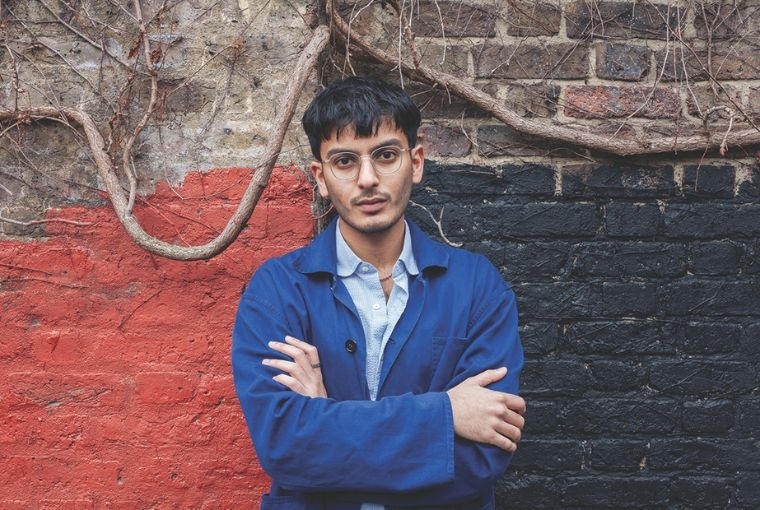

We have a complex relationship with rivers in India. We worship them, believe in their purity, rely on them as vital water sources, and see them as sacred entities, capable of washing away our sins—yet we continue to pollute them. This contradiction is what inspired Gurnaik Johal’s debut book, Saraswati. ‘Around 2017, I was trying to write a piece about the toxic foam that had built up on the Yamuna river. There was some-thing so arresting in the images of people continuing to bathe in the water despite its danger. The government had just given the river the same legal rights as a human and in researching more about that I grew interested in the deification and anthro-pomorphisation of Indian rivers, which led me to the Saraswati.’
The Saraswati is believed to have once flowed through the Indian subconti-nent but is thought to have dried up due to tectonic activity. While many regard it as a myth, others believe it still flows beneath the Thar Desert. ‘When I was researching, the idea that the lost Saraswati river of the Rig Veda was only a myth, was being debunked, with more research pointing to the fact that the river did in fact exist, and that a lot of Indus Valley civilisation sites were situated along its banks. About a year later, I saw some reports of water returning to the ancient paleochannels of this long lost river and read about govern-ment funds being allocated to researching whether in fact the river could be brought back.’ It was the perfect ‘what if’ question for Gurnaik. What if Saraswati comes back? How would this ancient river affect the different lives of people around it?

Saraswati brings out something, much rooted in Indian history to the sur-face, with the flair of a fictional story. With a string of deep historical rabbit holes, the lives of seven strangers are explored in the book. But Gurnaik’s novel is not just about history, one of seven characters is a Bollywood stunt double, bringing in humour and Bollywood masala. ‘In art, there’s this term ‘chiaroscuro’, which is about needing high contrast between light and dark to give a piece a sense of depth and volume. I think the same goes for fiction. If you want a well-rounded, realistic story, there has to be contrast between light and dark. In writing this book, I wanted to use all the keys on the piano, high and low.’
This nuanced approach has already earned the twenty six year old author rec-ognition, with several award-winning short stories to his name. Now, he finds the form of the novel to be more elastic, ‘it’s a container that keeps expanding the more you add into it’.
Gurnaik truly treated the form of novel like a freewheeling container, which also reflects in his intricate research process. ‘The research process for Saraswati was a lot of fun. I was constantly going down historical rabbit holes, from Xuanzang’s first trip to India to the making of the Kenya-Uganda ‘lunatic line’ to the global Ghadarite gun-running plot of the Annie Larsen affair. I spent hours learning about yellow crazy ant supercol-onies and ancient irrigation methods and the kind of machines that dredge up poly-metallic nodules in the Clarion-Clipperton zone, hours researching places as dispa-rate as Spitsbergen, Diego Garcia and the sprawling non-state zone of Zomia, which stretches from Afghanistan to Vietnam.’
He calls the novel, in a sense, a record of all that interested him in a five year period – ‘writing it was a means of doing crash courses in global politics, cli-mate change and the history of empire. I spent as much time in the library as I did watching YouTube or reading internet forums – it was important for me to look far and wide in the research’.
This book offers a deeper under-standing of our past and present—some-thing that a lot of nonfiction books often falls short of achieving. The book is indeed a symbol of the goddess after whom the river is named and inspired by Saraswati, the goddess of knowledge.
Words Paridhi Badgotri
22.06.2025